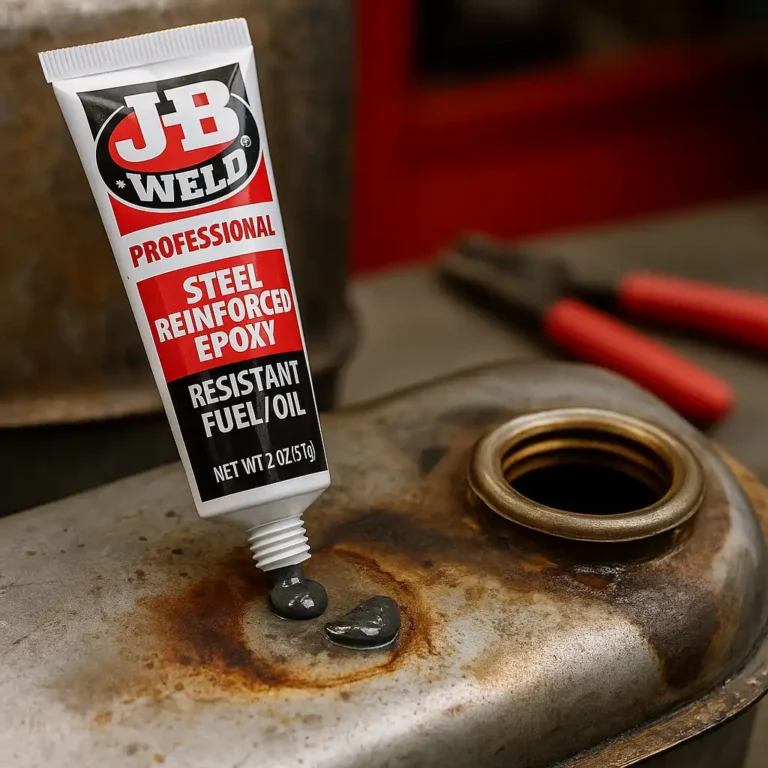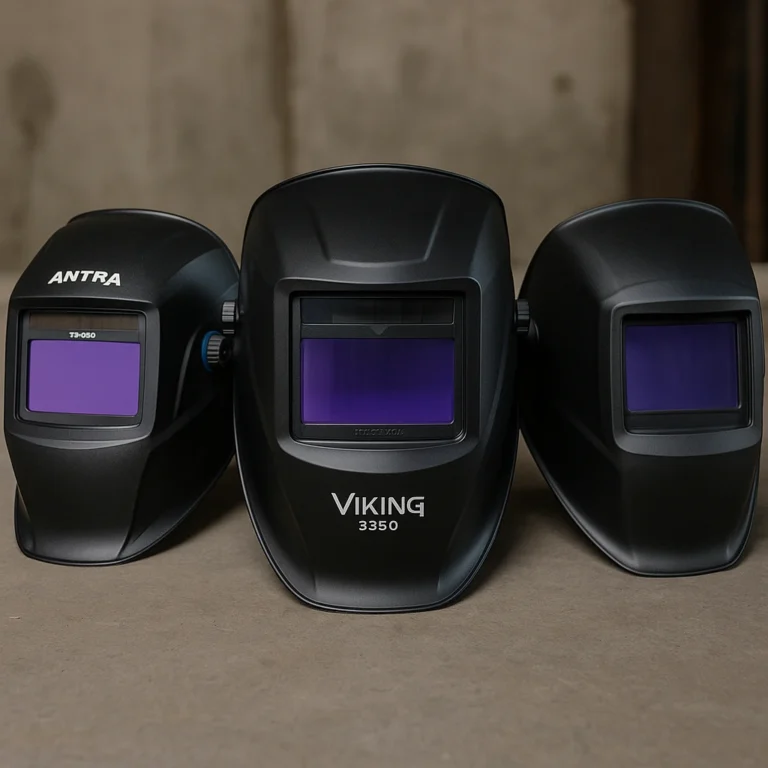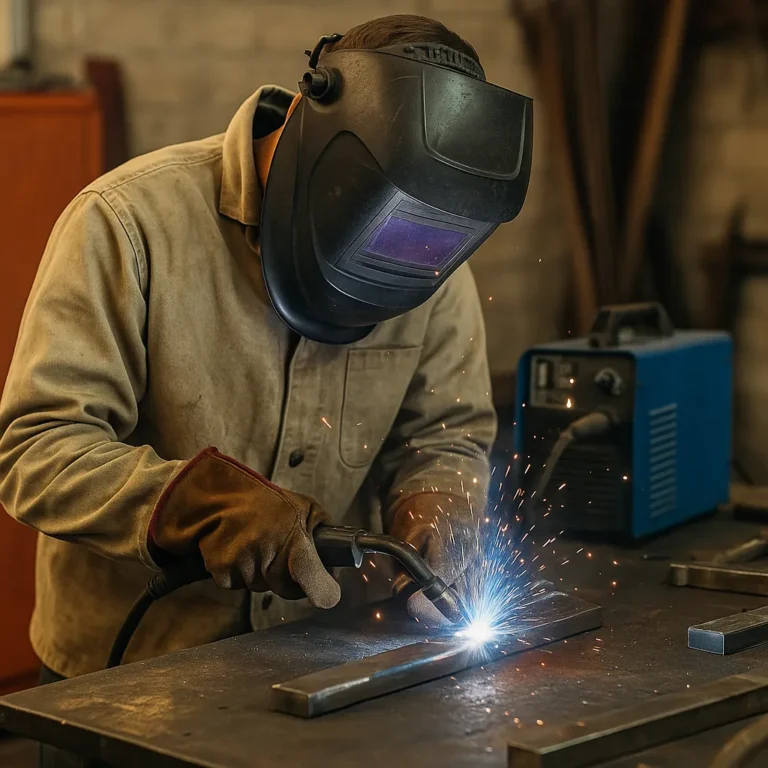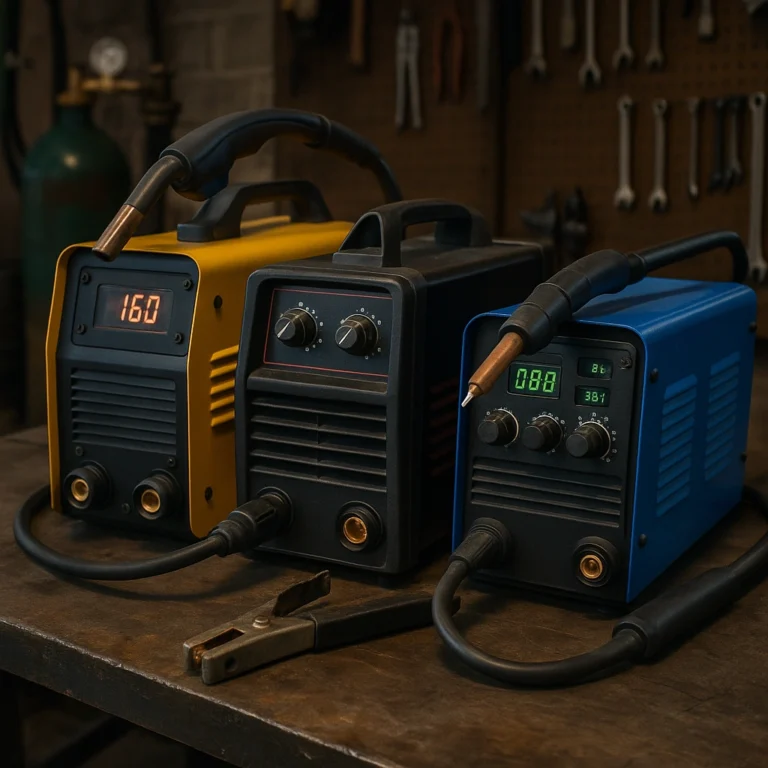Is Welding Hard to Learn? A Welder’s Honest, Beginner-Friendly Guide
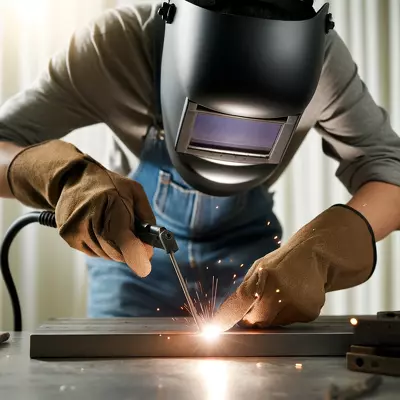
Disclosure: This post contains affiliate links. As an Amazon Associate, I earn from qualifying purchases—at no extra cost to you.
Last Updated: November 2025
Welding can seem intense when you first watch it—bright arcs, loud sparks, and thick gloves—but learning the basics is easier than it looks. The real challenge isn’t striking an arc; it’s staying steady, watching the puddle, and understanding how heat shapes the metal. Once those pieces click, welding starts feeling a lot more natural.
With the right machine, clean metal, and a little patience, welding becomes a skill you can improve quickly—especially once you learn to trust what the puddle is showing you.
👉 For a closer look at how different welders compare, check our guide on choosing the right welding setup.
🔍 What Makes Welding Hard for Beginners?
Most beginners struggle with coordination at first. Holding a steady angle, matching your speed to the heat, and keeping your eyes on the puddle instead of the arc takes practice. The motions feel awkward early on, but muscle memory builds fast.
Once you understand how the puddle reacts—whether it’s flattening, stacking up, or running too cold—you start correcting mistakes without even thinking about it.
🔍 Which Type of Welding Is Easiest to Learn?
Some welding processes are a lot friendlier for beginners.
For most new welders:
- MIG welding is easily the simplest. It’s clean, forgiving, and quick to learn.
- Stick welding takes more time because the rod constantly melts and shortens.
- TIG welding requires the most coordination since you’re managing heat, torch angle, and filler rod all at once.
If your goal is to build confidence fast, MIG is the best launching point.
👉 Before choosing a welding process, take a quick look at our breakdown of how to choose the right welding machine to see which option fits your starting point best.
🔍 How Long Does It Take to Learn Welding?
You can pick up the basics quickly. Many beginners lay down a halfway decent bead within a few hours.
A typical learning curve looks like this:
- 1–2 days: you’re running basic MIG beads
- 1–2 weeks: you can make simple joints that hold well
- 1–3 months: you’ll see cleaner beads, steadier hands, and smoother motion
Becoming an expert takes time, but getting comfortable enough for hobby projects happens far sooner than most people expect.
🔍 Tips to Learn Welding Faster
A few small habits make a big difference:
- Practice on clean, bare steel
- Run straight beads before trying joints
- Brace your wrists or elbows for stability
- Watch the puddle—not the arc
- Use a helmet you can see clearly through
- Stick with one process until it feels natural
These simple steps speed up your improvement and make your practice time count.
🔍 Common Beginner Mistakes
Every new welder runs into the same issues—going too fast, going too slow, welding dirty metal, choosing the wrong settings, or holding the gun at an awkward angle.
These mistakes fade as soon as you learn how heat and travel speed shape the puddle. Once that clicks, everything else falls into place.
📌 Key Takeaways
- Welding looks harder than it actually is—the basics come quickly.
- MIG is the easiest process for beginners to learn.
- Reading the puddle is the most important skill to master.
- Clean metal and steady hand support improve consistency.
- With regular practice, progress comes faster than most expect.
🟢 FAQs About Learning Welding
Is welding dangerous for beginners?
Not when you use proper PPE. A good helmet, gloves, and long sleeves prevent most issues.
Can I teach myself welding?
Yes. Many welders start out self-taught. Guidance helps, but it’s not required.
Do I need expensive equipment to begin?
No. Entry-level MIG welders are affordable and great for beginners.
✅ Conclusion
Welding isn’t as hard to learn as it looks. Once you understand heat control and learn to read the puddle, the process becomes far more intuitive. Starting with MIG gives beginners the quickest path to clean, consistent beads and builds the confidence needed to explore other welding methods.


